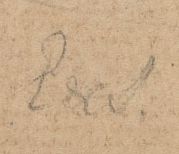Working with Vertical Text
It wasn’t until I began looking through all the letters in the Blake Archive that I realized just how unique Blake’s second November 22nd 1802 letter to Thomas Butts really is. This uniqueness poses some interesting problems when it comes to encoding. The text of this letter fills both leaves of paper from top to bottom and comes very close to the margins. It includes both prose and verse, and the verse is in two columns that begin on the first page and end on the second.
Continue reading
